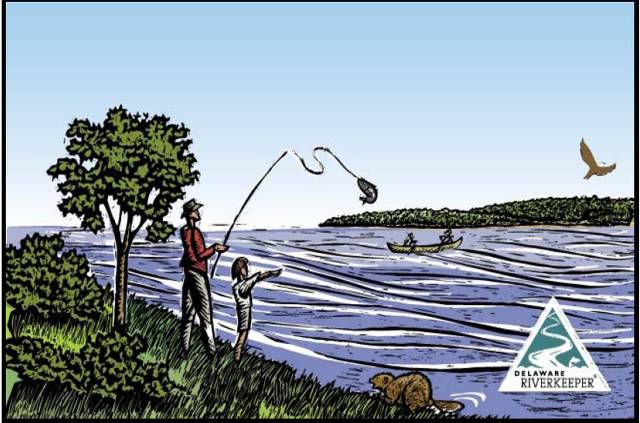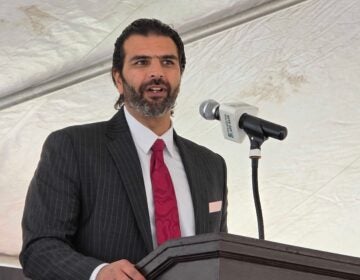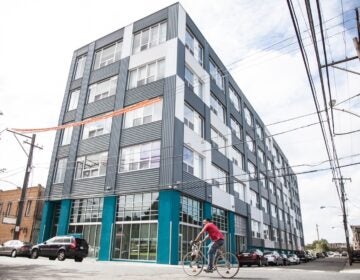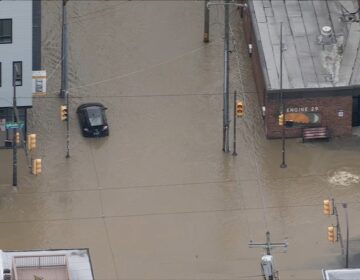Trying to strike a balance on the Delaware
May 5, 2010
JoAnn Greco
For PlanPhilly
Dredging and natural gas drilling, oil refineries and port activity — the Delaware River, all 330 miles of it from upstate New York to the Delaware Bay — is ripe for industrial uses that bring thousands of jobs to our region and pump millions of dollars into the local economy.
But it’s what else these concerns conceivably might be pumping, of course, that worries environmentalist and river stewards. Just about everyone agrees with them — who doesn’t appreciate the abundance, beauty, and assets of a good river and who hasn’t watched with horror the activities down on the Louisiana Gulf Coast? Still, that kind of soft argument usually doesn’t, er, hold water when it comes to money.
That’s why the Delaware Riverkeepers Network has gathered records and case studies from a myriad of sources to build a case for the possibilities of enriching local coffers while keeping the river safe and clean. The result is a densely-packed 76-page report, “River Values: The Value of a Clean and Healthy Delaware River,” that illustrates some of the pleasanter ways in which to make money off the river, from professional nature photography to ecotourism to commercial fishing.
“We created this report to give river communities some fodder to push back when potential industrial uses come in and talk about job creation,” says Maya K. van Rossum, the Delaware Riverkeeper. “What if you could show that to get, say, five new industrial jobs you might have to lose 50 river jobs?”
Lest it all get a little too Huck Finn, the report notes that big business benefits, too, from a healthy river. “Horseshoe crabs are under constant threat,” says van Rossum, “and they will be endangered by future projects like the river deepening.”
Destroying their habitat would cause havoc for migratory birds that feed on them, and in turn would impact on the eco-tourism that results from their presence, van Rossum points out, before adding: “but these developments would also have serious ramifications for the biomedical industry because it relies on blood drawn, non-lethally, from the horseshoe crab to meet FDA testing requirements of prosthetics and other medical devices.” The substance used has never been able to be synthetically created, she points out.
While “we can’t neglect the recreational value of the river as an economic stimulus,” says State Rep. Michael O’Brien (D. Phila.), “we have to remember that on the whole the riverfront communities in the city have a definite affinity for its use as a port. It goes to the origins of Philadelphia and it’s been very good to a lot of people for a long time.” With the Port of New York at capacity, he adds, “Philadelphia is even more attractive.”
For Carol Collier, executive director of the Delaware River Basin Commission, “there”s no question that port activity is a major role for the Delaware River. It’s the largest freshwater port in the country and this is part of what’s made the river so vital and interesting for so many years.”
As far as other industrial uses such as drilling for natural gas in upstate Pennsylvania, small landowners are reaping thousands of dollars in leasing their acreage to energy companies, and the often-depressed areas are tantalized by the promise of new jobs. “We just need to make sure safety checks are in place,” says Collier.
And, she continues: “The horseshoe crab and the marshes and the oysters and the birds and ecotourism — they are valid and thriving parts of the river economy, too. It’s almost as if there are two coinciding river stories and so they have to march together. It can’t be one or the other. Industry isn’t inevitably harmful,” Collier observes. “It just has to be done smartly.”
But as the world watches the Louisiana oil rig disaster get worse before it gets better, it’s clear that promises — no matter if they are well-intentioned — can be misleading at best and false at worse, says Representative O’Brien.
“With the Marcellus shale, the original conversation was about the fracking process,” he points out, referring to the natural gas drilling debate raging in northeastern PA. “They said, ‘oh, it’s just water, we’re just shooting water down there, it’s no big deal,'” he continues, citing the explanation drillers offered about how gas would be extracted from shale. “Then, the conversation moved to ‘it’s water and a few chemicals, but nothing you wouldn’t find under your kitchen sink’. Then it became, ‘okay, yes, there are some carcinogens in there’.”
So, O’Brien says, while it may be true that we can use this natural resource to move us to energy independence via a more environmentally friendly fuel while providing loads of jobs, we have to “acknowledge the negative impact on the environment and be prepared to deal with it. Sweeping it under the carpet is of no help to anyone.”
Still, if there’s any true culprit, experts say, it’s more likely to be rampant development rather than industrial. “The major threats that we see have to do with the loss of forest upriver and with land use changes,” says Collier, “and both often come from population shifts and the development associated with them.”

Maya K. van Rossum
Trees are vitally important in a lot of contexts, agrees van Rossum. These include, she says, flood reduction (and the costs associated with flood damage), the protection — via natural filtration — of downriver drinking water, and the capture and reinjection of rainwater into the system.
But trees are threatened not just by development, she insists. “The natural gas drilling project slated for upriver puts at risk 100,000 acres of wooded areas because of the structures, such as well pads, roads, and pipelines, that need to be built.”
It’s great that so many governmental overseers are keeping an eye on industry, van Rossum concludes. “But the prevailing mindset is still that the river is there to serve industry,” she emphasizes. “We need to be ready when industry throws out their big numbers about how the work will economically benefit the river communities.
“The dredging of the river, for example, promises to reap $32 million a year, she says. “That’s nothing compared to the $80 million in overall economic impact that oyster harvesting produces annually. We believe that the benefits from industry all around are probably less than those from the kinds of businesses we’re highlighting in this report.”
Contact JoAnn Greco at www.joanngreco.com
Check out her new online magazine, TheCityTraveler at www.thecitytraveler.com
WHYY is your source for fact-based, in-depth journalism and information. As a nonprofit organization, we rely on financial support from readers like you. Please give today.








